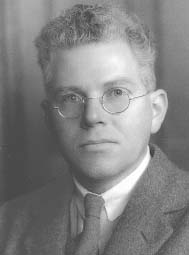Mark Oliphant
 Marcus (Mark) Laurence Elwin Oliphant (registered as Olifent
Bk 683 p235) born in Kent Town on 8 October 1901, the eldest
of Harold George And Beatrice Edith nee Tucker, was one
of Australia's great scientists. He graduated from Adelaide
University with a scholarship to join Lord Rutherford’s
research team at Cambridge University working in the field
of nuclear physics. Oliphant's main contribution was the
discovery of tritium, an isotope of hydrogen, and the establishment
of reactions that take place at collisions between deuterons. Marcus (Mark) Laurence Elwin Oliphant (registered as Olifent
Bk 683 p235) born in Kent Town on 8 October 1901, the eldest
of Harold George And Beatrice Edith nee Tucker, was one
of Australia's great scientists. He graduated from Adelaide
University with a scholarship to join Lord Rutherford’s
research team at Cambridge University working in the field
of nuclear physics. Oliphant's main contribution was the
discovery of tritium, an isotope of hydrogen, and the establishment
of reactions that take place at collisions between deuterons.
During World War Two, Mark Oliphant worked on improving
communication equipment and was part of a team that invented
a resonant
cavity magnetron, a radar device that was used to track
down enemy planes and ships which gave the Allies a huge
advantage
in air and navy battles and which has an application in
modern kitchens in the form of the microwave oven.
By 1943 Oliphant was leading a top secret research in America
codenamed the Manhatten Project to be the first to develop
the atom bomb.
Following the war, Oliphant returned to Australia in 1950
to help establish the Australian National University in
Canberra as the first Director of the Research School of
Physical Sciences where he continued his work in nuclear
physics. While at the ANU, he developed a railgun which
is a form of gun that converts electrical energy into kinetic
energy using electromagnetics.
In 1971, Oliphant, now knighted, was
appointed Governor of South Australia. In this role he
broke with the tradition of being apolitical and continued
to be outspoken on a number of matters and especially those
relating to the environment. When he retired in his nineties,
Sir Mark continued to speak up on issues.
Sir Mark Oliphant AC KBE FRS FAA Hon FRSNZ FTSE died on 17
July 2000 in Canberra.
|